Proiecte
National Projects (PN IV)
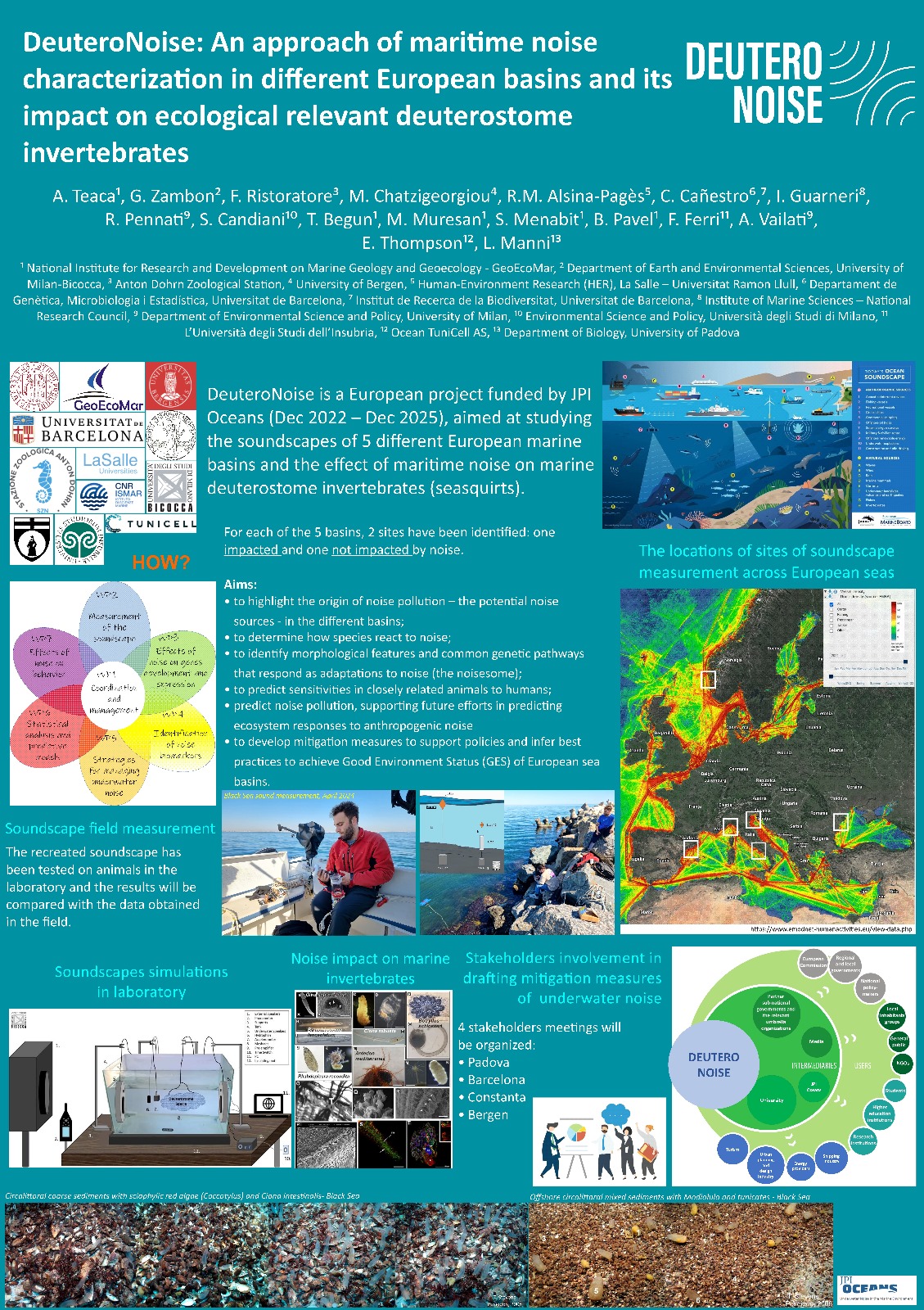
Among noise sources, maritime traffic is of relevance on animal wellness, although its impact is little known in many European sea-basins. To date, there has been an almost exclusive focus on vertebrates, in which noise involves the mechanoreceptor cells of the ear and can cause hearing impairment or deafness. Homolog cells have been discovered in tunicates, marine invertebrates closely related to vertebrates, thus opening the question on their ability to sense and be affected by noise. Tunicate mechanoreceptors sense sound waves and particle movement and are predictable targets of noise pollution. DeuteroNoise aims to characterize the noise pollution caused by maritime traffic (also using simulations) in selected sites of the North Adriatic Sea, Lagoon of Venice, North Sea, Black Sea, and Barcelona shore, and test its effects on behavior, nervous system and sensory organs, immune system, and resilience in marine invertebrates closely related to vertebrates (deuterostomes): hemichordates, echinoderms, cephalochordates, and tunicates. These animals are common in European seas and cover different levels of the trophic network, from the holoplankton-meroplankton to sessile or sedentary primary consumers. Noise level will be detected on site and simulated in the laboratory. A behavioral, morphological and genetic survey will be conducted on sampled animals living in polluted vs non-polluted areas. Moreover, animals will be exposed to noise in laboratory-controlled conditions to verify its effect on larval, juvenile and adult stages at individual level and over generations. Comparative studies will allow us to: highlight causes of noise pollution in the different basins; determine how species react to it; identify its genetic and morphological signatures; predict sensitivities in closely related animals that cannot easily be studied in laboratory or on-site; predict noise pollution and infer the best practices to reach the Good Environment Status of European basins.
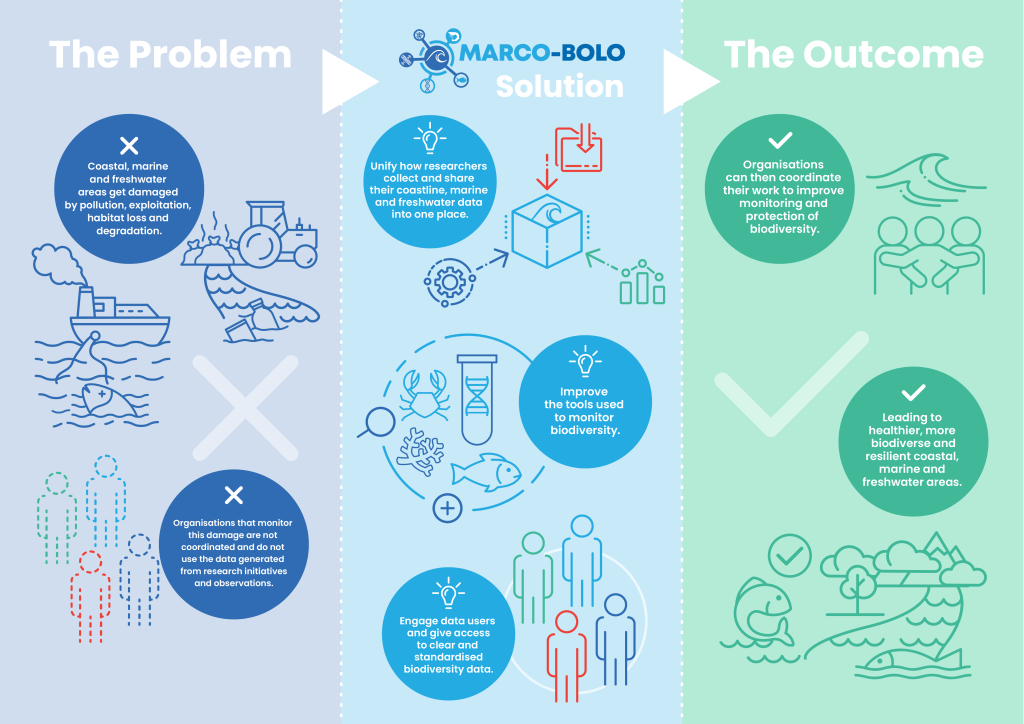
The project aims to respond to modern challenges regarding the loss of biodiversity and habitats, by approaching molecular investigation of the Black Sea environment and its species. Sustain efforts towards harmonization of molecular techniques are made globally in order to halt the loss of biodiversity in agreement with the UE Biodiversity Strategy 2030 desiderates (“to put Europe’s biodiversity on a path to recovery by 2030”) and The Marine Strategy Framework Directive (2008/56/CE), which requires the achievement of Good Environmental Status of biodiversity and habitats. Barcoding and e-DNA techniques rely on genetic markers to identify species unlike the ”classical” approach based on morphological characters.
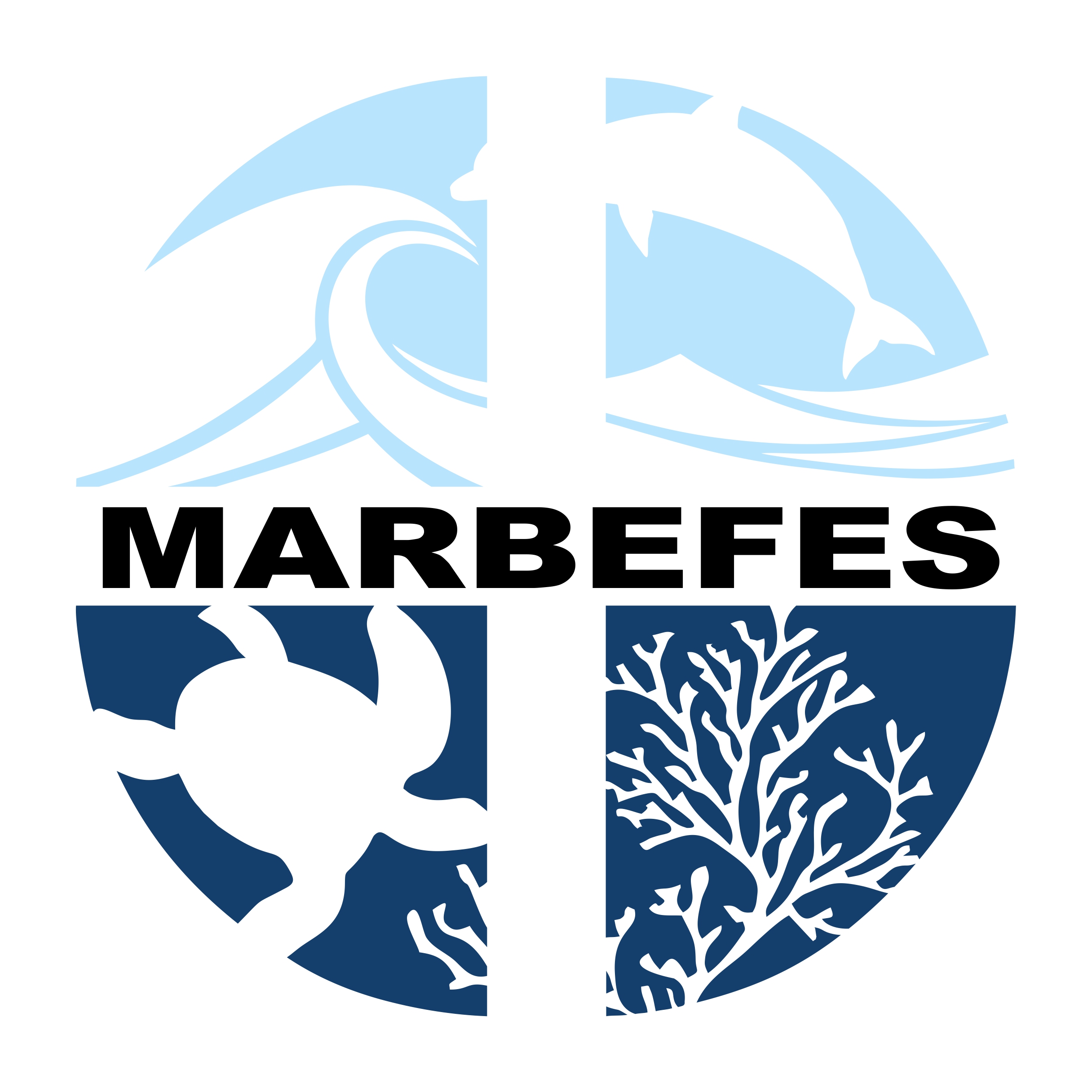
The project aimed to assess the impact of stressors on the ecosystem and the regulating, supporting, and provisioning ecosystem services of the Romanian shelf waters of the Black Sea, which are influenced by the Danube and other anthropogenic sources. It contributed to understanding how these effects may impact environmental quality and biota.
The project was carried out in two stages:
Stage 1: Assessing the effects of stressors on the ecological status and ecosystem services of the Black Sea;
Stage 2: Determining the cumulative effects of pollutants and abiotic factors on species and ecosystem services.

Recently, CCS value chain started considering ships for direct injection, not only transport. The CTS project will evaluate the global potential of this technology for facilitating permanent CO2 storage using case studies from offshore on the Norwegian Continental Shelf, Baltics, Black Sea and Atlantic coast of Portugal. CTS will study the impact of direct injection from ship on the definition of capture clusters and storage facilities by developing CCS scenarios in four different offshore regions in Europe. The efficiency of the scenarios from the perspective of cost and abated CO2 emissions compared to existing plans and scenarios will be evaluated. One of the project goals is to advance direct ship injection technology further together with NEMO Maritime – the industrial partner developing one of such solutions. Direct ship injection is a flexible and low cost solution that can help accelerate CO2 storage and contribute to reducing emissions already by 2030. CTS aims at improving cost and efficiency along the value chain; developing new markets by better addressing the need of smaller emitters; increasing LCA and TEA knowledge for the value chains in selected areas. By utilizing offshore storage and building trustful communication with stakeholders in selected geographical locations, CTS also aims to contribute to strengthening the acceptance of CCUS technologies.
The main impact of the project is to provide a technology that will allow to decrease costs, reduce conflicts with other marine activities and increase flexibility for early start of CO2 injection in offshore regions, therefore addressing some of the major issues that can hinder the deployment of CCS in Europe on a scale able to deliver required mitigations before 2030.
The project aims to engage new stakeholders in four offshore regions through versatility, flexibility and cost efficiency of direct CO2 injection from ship for permanent storage. The key outcome is design of a full CCUS value chain including direct injection from ship, with engagement of the stakeholders along it. Creation of a full value chain design will promote stakeholder engagement and create a platform for evaluation of the business cases by individual stakeholders by giving them a realistic scenario to adhere to.
The outcomes should help to increase roll-out of the CCS value chains not only through technological advantages of direct ship injection, but also by reducing the threshold for smaller emitters and unlocking offshore storage potential in sites becoming commercial due to lower capex and opex of direct ship injection. Generally, CTS contribution is to map potential emitters, prepare conceptual design of the value chain with a focus on ship design, wells, and storage site.
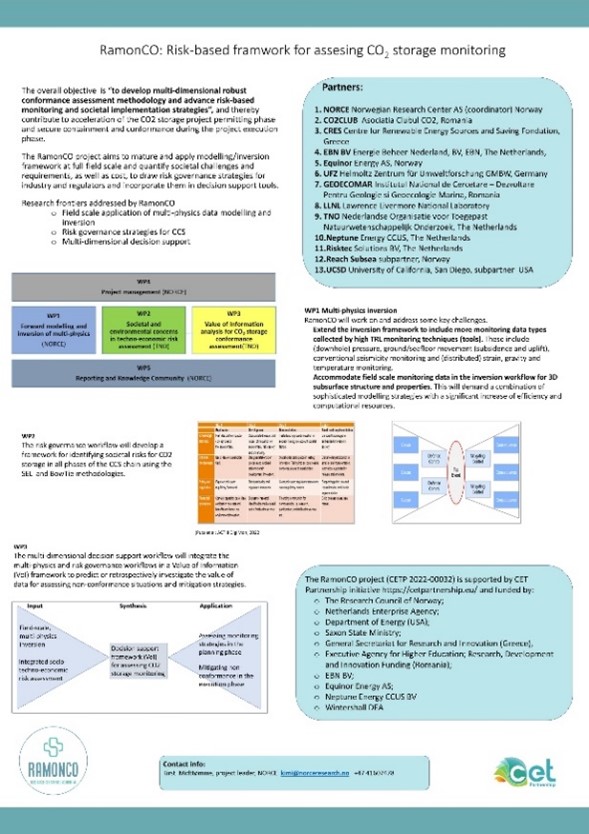
Accelerating CCS to achieve significant CO₂ reductions by 2030 requires close integration of technical, economic, social, and environmental disciplines to support decision-making related to permitting, ensuring safe containment, and maintaining compliance during the execution phase of CCS projects. The RamonCO Project aims to further develop and fully apply the modeling/inversion framework developed in DigiMon and to assess societal challenges and requirements, as well as costs, in order to develop risk governance strategies for industry and regulators, incorporating them into decision-support tools.
The project will develop and demonstrate methodologies and tools for compliance assessment and risk-based monitoring on an industrial scale, including the analysis of operational data from sites equipped with relevant monitoring technologies. At the start of the project, we will initially test the inversion framework using synthetic data and then explore the possibility of obtaining suitable real-field data for testing the methodology with industry partners. Furthermore, we will model CO₂ storage sites that are in the planning phase, such as depleted gas fields in the Netherlands. We will also investigate how different perspectives on CO₂ storage across European countries influence risk assessment (for EU CO₂ storage hubs) and how these insights can be used to make informed decisions regarding the monitoring systems.
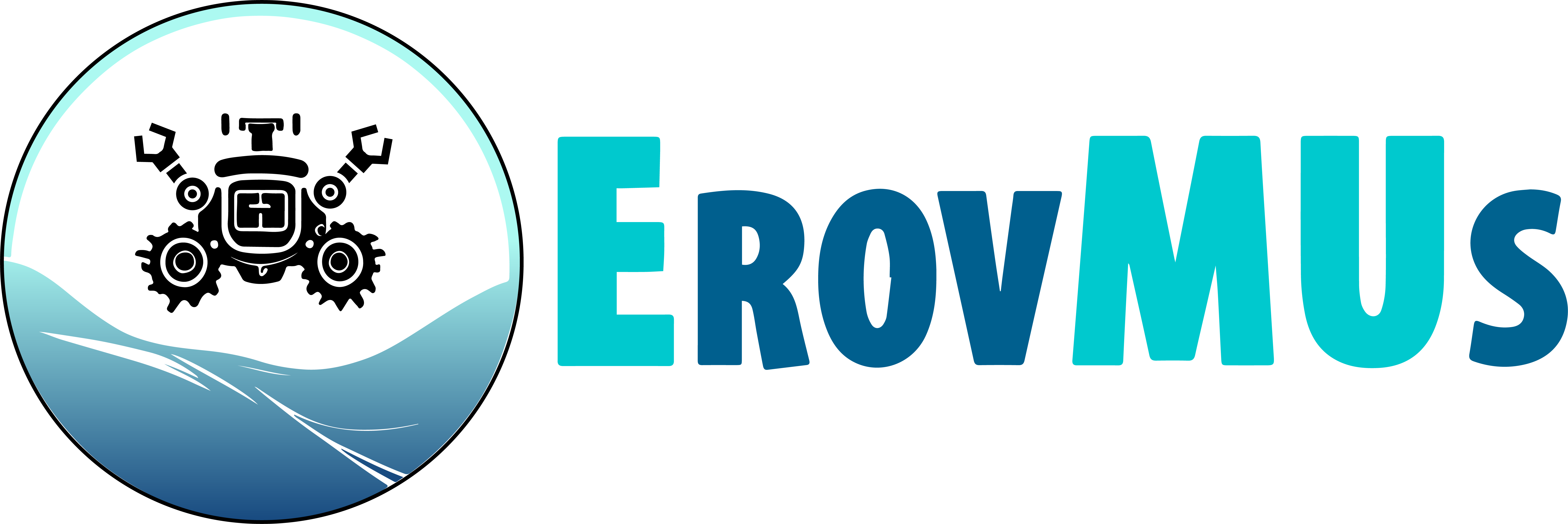
The EROVMUS project aims to create an established interface for ROV (remotely operated vehicle) pilots, enabling them to easily and efficiently launch the ROV services in missions related to the identification/location of unexploded underwater munitions stranded on the seabed. These include both a multi-operational platform equipped with a series of sensors and software creating solutions. The activities envisaged are related to navigation improvement, the introduction of autonomous identification routines, as well as high-performance image acquisition technologies. The data obtained from multiple sensors will be overlaid to produce an equivalent of the standard primary Heads UP (HUD) display for the pilot, thus reducing the number of displays that is necessary for efficient operation. Furthermore, solutions for implementing virtual reality (VR) technology will be analysed, allowing the use of virtual displays and the combination of images from multiple cameras to create a single large virtual display to improve ammunition identification. The project will develop, test and optimize a range of tools and assess their interoperability with several existing ROV models and brands. This will create a potential product range that could be implemented by other ROV equipment manufacturers.
The project outcome has the potential to both improve the current technical state of the equipment and to create new jobs, thus improving the European competitiveness in the underwater technology sector.

Observations on board the vessel and in particular measurements in the water column remain core activities in oceanography. In accordance with the Framework Directive on the Marine Environment Strategy, each sea/ocean-opening Community state, including Romania, implements programmes to monitor the physicochemical parameters in the water column thus providing data to support the international hydrographic community.
However, the degree of participation and involvement of the Romanian marine scientific community within the international hydrographic network is relatively limited. Thus, the Euro GO-SHIP project proposes a program aimed at providing services and opportunities such as:
- Training in good laboratory practices, access of Romanian researchers to the infrastructures of research organizations/institutes in Europe (European Infrastructure Sharing);
- Improving the quality of the provided river data by developing and testing a new method of conservation and analysis of seawater for nutrient determination;
- Secondary control of data quality with a view to strengthening the ability to estimate the uncertainty of observations.
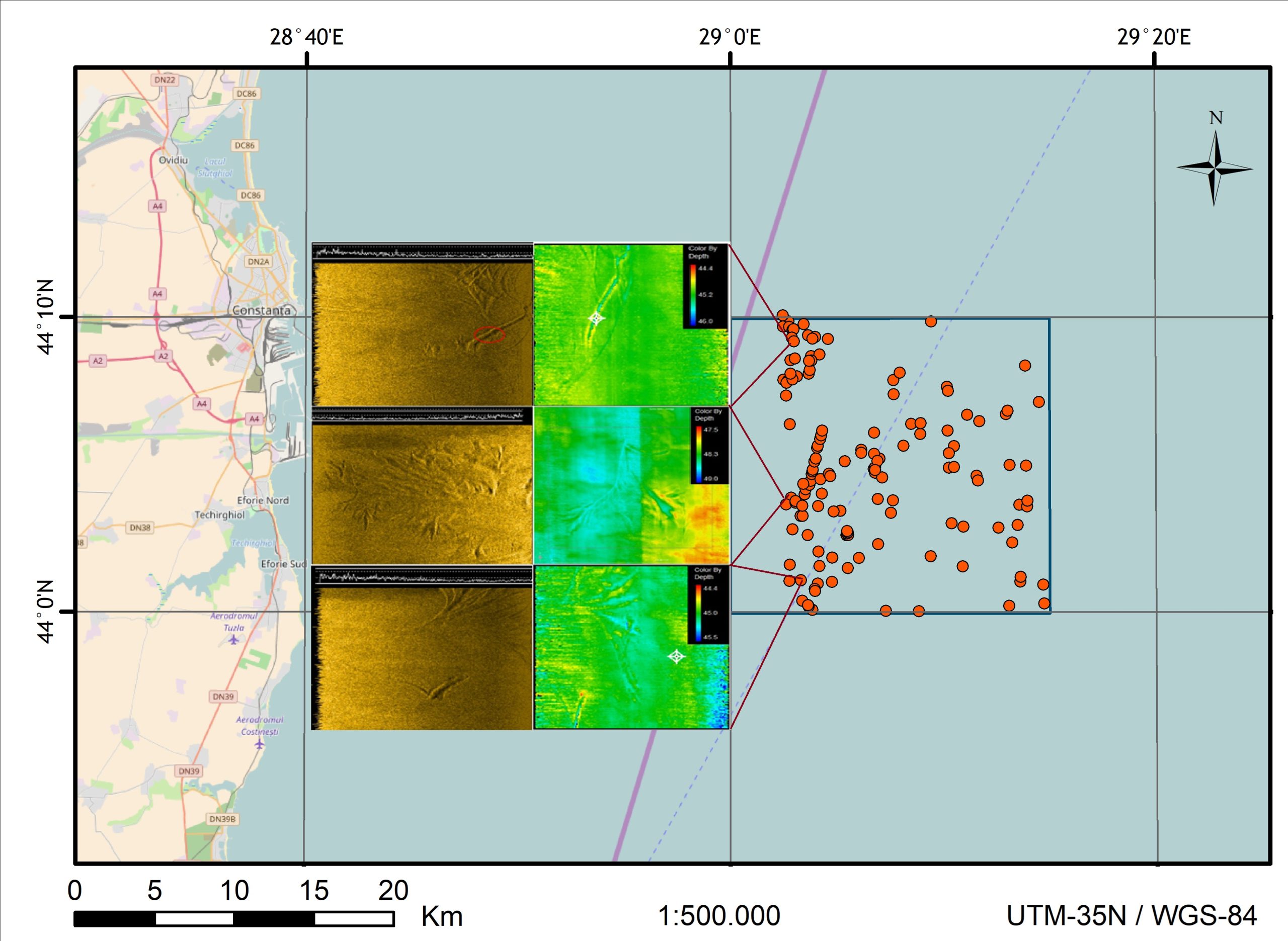
The project aims to develop and test novel practices for the identification and retrieval of subaquatic macro-plastics, primarily derived from discarded fishing gear, within the inner shelf of the western Black Sea. It seeks to recover derelict fishing gear for recycling, understanding transport and accumulation dynamics, and assessing microplastic pollution in living species and their habitats. Notably, the project addresses the significant impact of lost fishing equipment, or “ghost nets,” on marine biodiversity, highlighting risks to economically vital species and potential threats to human health through the food chain. Past studies reveal concerning levels of microplastic ingestion by Black Sea fauna, indicating urgent action. This project pioneers technologies and systems for identifying, recovering, and recycling macro-litter, focusing on ghost nets on the Romanian Black Sea shelf. Project objectives include confirming ghost net locations, recovering nets, evaluating fauna entanglement, and conducting microplastic studies. Advanced bathymetry tools facilitate precise mapping of litter, while custom recovery equipment ensures efficient retrieval. Fauna and sediment samples collected alongside ghost nets undergo thorough laboratory analysis to assess microplastic contamination. By addressing critical gaps in litter management and marine pollution research, this project aims to mitigate the impact of plastic waste on the Black Sea ecosystem and safeguard human health.
The aim of the mobility project is to capitalize the expertise and experience of Dr. Cornel Olariu (researcher and Associate Professor in the Department ”Earth and Planetary Sciences” of the Jackson School of Geosciences, University of Texas at Austin) in the field of sedimentology and stratigraphy by his participation in meetings with researchers from the National Institute of Research Development for Marine Geology and GeoEcoMar, – GeoEcoMar as well as with students from the Faculty of Geology and Geophysics of the University of Bucharest.
During his visit, Dr. Cornel Olariu will give a public lecture on the topic “Formation and evolution of submarine valleys on the continental slope: a key element in sediment transport to the basin floor”; he will be involved in the preparation of a project related to the transport and mixing of sediments from the Danube bed with sediments transported by coastal currents from the mouths of Ukrainian rivers: he will work with GeoEcoMar researchers on manuscripts with the topics: (a) the provenance of the Danube sediments and the main tributaries, (b) the transport of sediments in the Lower Danube area and in the marine influence area, and (c) the variation of the morphology of the Danube Delta front using historical bathymetric maps.

The project aims to respond to the modern challenges regarding loss of biodiversity and habitats by approaching the molecular investigation of the Black Sea environment and its species. Sustained efforts towards harmonization of molecular techniques are made globally in order to halt the loss of biodiversity in agreement with the UE Biodiversity Strategy 2030 desiderates – “to put Europe’s biodiversity on a path to recovery by 2030” – and The Marine Strategy Framework Directive (2008/56/CE), which requires the achievement of Good Environmental Status of biodiversity and habitats.
Unlike the ”classical” approach based on morphological characters, Barcoding and e-DNA techniques rely on the genetic markers to identify species. Worldwide, the number of marine species whose genome has been sequenced is only 190, while the proportion of those in the Black Sea is less than 0.1% of the total of over 2000 existing species.
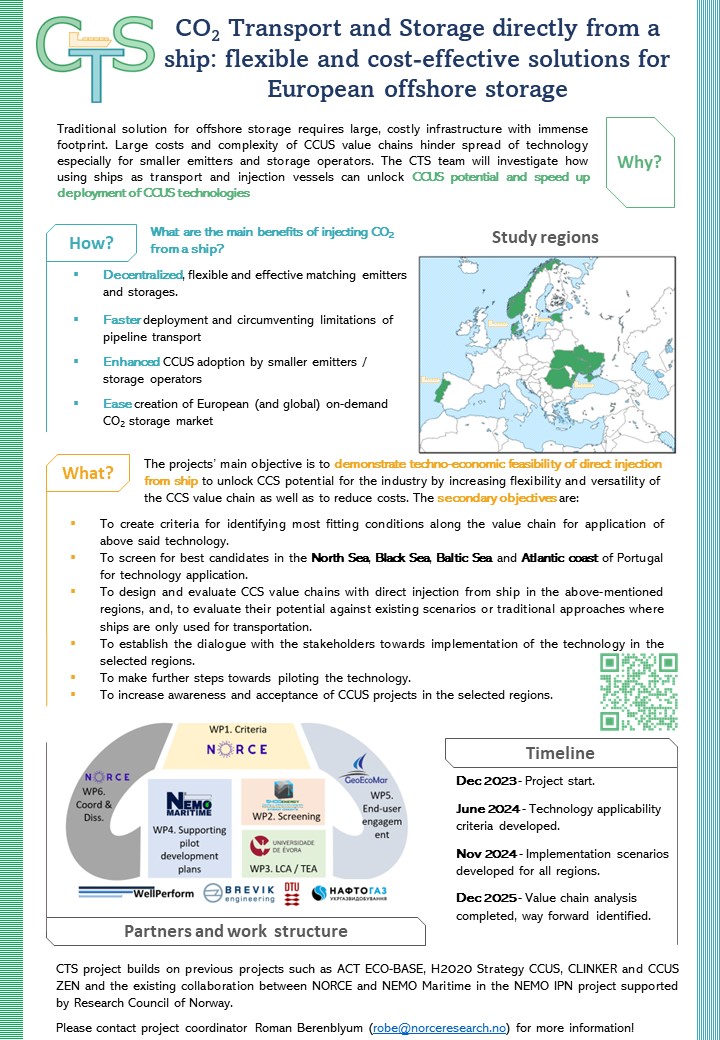
Recently CCS value chain started considering ships for direct injection, not only transport. The CTS project will evaluate the global potential of this technology for facilitating permanent CO2 storage using case studies from offshore on the Norwegian Continental Shelf, Baltics, Black Sea and Atlantic coast of Portugal. CTS will study the impact of direct injection from ship on the definition of capture clusters and storage facilities by developing CCS scenarios in four different offshore regions in Europe. The efficiency of the scenarios from the perspective of cost and abated CO2 emissions compared to existing plans and scenarios will be evaluated.
One of the project goals is to advance direct ship injection technology further together with NEMO Maritime – the industrial partner developing one of such solutions. Direct ship injection is a flexible and low cost solution that can help accelerate CO2 storage and contribute to reducing emissions already by 2030. CTS aims at improving cost and efficiency along the value chain; developing new markets by better addressing the need of smaller emitters; increasing LCA and TEA knowledge for the value chains in selected areas.
By utilizing offshore storage and building trustful communication with stakeholders in selected geographical locations, CTS also aims to contribute to strengthening the acceptance of CCUS technologies.
The main impact of the project is to provide a technology that will allow to decrease costs, reduce conflicts with other marine activities and increase flexibility for early start of CO2 injection in offshore regions, therefore addressing some of the major issues that can hinder the deployment of CCS in Europe on a scale able to deliver required mitigations before 2030.
The project aims to engage new stakeholders in four offshore regions through versatility, flexibility and cost efficiency of direct CO2 injection from ship for permanent storage. The key outcome is design of a full CCUS value chain including direct injection from ship, with engagement of the stakeholders along it. Creation of a full value chain design will promote stakeholder engagement and create a platform for evaluation of the business cases by individual stakeholders by giving them a realistic scenario to adhere to.
The outcomes should help to increase roll-out of the CCS value chains not only through technological advantages of direct ship injection, but also by reducing the threshold for smaller emitters and unlocking offshore storage potential in sites becoming commercial due to lower capex and opex of direct ship injection. Generally, CTS contribution is to map potential emitters, prepare conceptual design of the value chain with a focus on ship design, wells, and storage site.

